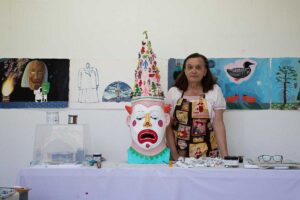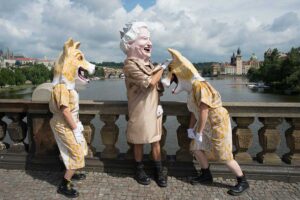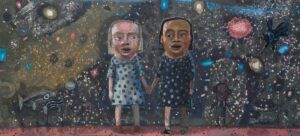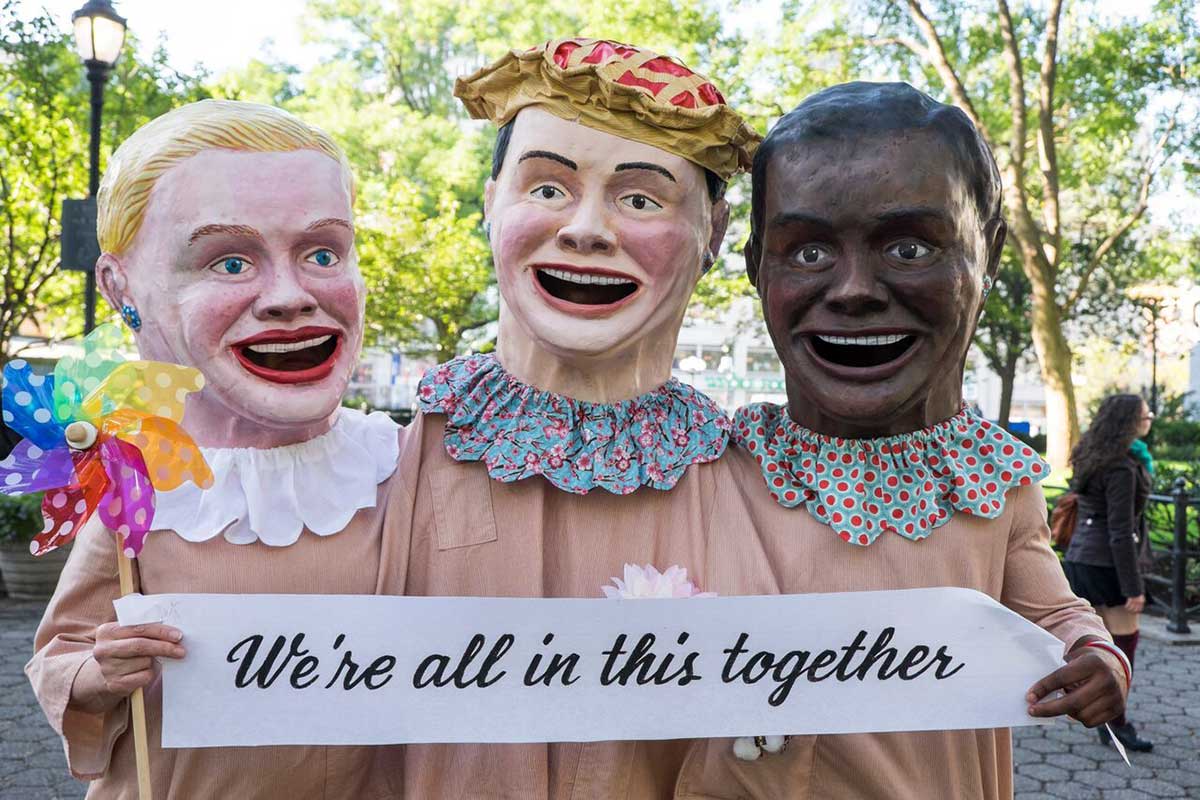WILSON, N.C. — February 21, 2023 — Barton Art Galleries is delighted to announce the opening of Megan Marlatt’s exhibition “Mummer” on March 13, with a reception planned for Thursday, March 16, 5-7 pm. The gallery talk will begin at 6 p.m. The reception and the exhibition is open to the public at no charge, and the community is invited to attend. The exhibition will be open from March 13-April 23, 2023.
 Marlatt also will be Barton’s spring artist-in-residence, working with the Barton art students, March 13-25. She will return for a Community Earth Day Parade Celebration on the Barton Campus at Noon on Saturday, April 22. The parade will feature large paper mache Sea Animal heads created by Marlatt and the Barton art students. Guests are invited to meet at outside the Case Art Building to join in the fun.
Marlatt also will be Barton’s spring artist-in-residence, working with the Barton art students, March 13-25. She will return for a Community Earth Day Parade Celebration on the Barton Campus at Noon on Saturday, April 22. The parade will feature large paper mache Sea Animal heads created by Marlatt and the Barton art students. Guests are invited to meet at outside the Case Art Building to join in the fun.
Marlatt’s “Mummer” exhibition is a product of her deep interest in the art and history of Carnival. In describing her work, she says, “I am interested in the liminal, the space in between boundaries or at a threshold. Since I first learned to make big head masks (or capgrossos), from the Catalonian folk artists Ventura and Hosta in 2012, I have studied the European tradition of pre-Lenten carnival, (including under a Fulbright Scholar Award to Belgium in 2018.) Most Americans think of amusement park rides and arcade games when they hear the word “carnival,” but I’m referring to an old event, evolved from Western pagan rituals and adapted into European Catholic and Protestant culture. It’s the same carnival Bruegel painted in “The Fight Between Carnival and Lent” nearly 500 years ago. When I see the present day Binche Giles of Belgium, the German Wild Men of the Alps, the Kukeri of Bulgaria or the Snap Critters of Northern Italy, I know the Western European culture that my art stems from is not as rational or objective as it pretends to be. Rooted in an ancient agrarian society dependent on the changing seasons, carnival’s time frame teeters between the weakening night force of winter and the strengthening day force of spring. Therefore, many carnival rituals across Western Europe involve shedding the evils of winter, waking up the icy earth and ushering in the fecund, warmer months of spring. It is in this liminal space and time between the changes of the seasons that a void in the universe exists and the magic of carnival emerges.”
 “Part of that magic involves the borrowing of another’s persona through costume and mask wearing,” she continues. “Every culture across the globe has masks, and they are the most transformative and empathetic of all human artifacts. They offer a masked performer the ability to climb into the skin of another being and see the other’s world from behind their eyes. While doing so, the mask erases all clues of the performer’s age, gender, species, or race. Mummer events like carnival, festival parades, or theater offer the opportunity to transform oneself temporarily into another person or being. The focus is not on the single identity of an individual, but the flux and interchange of relationships. In this way, it forms a venue for empathy with others and an opportunity for sharing as a community.”
“Part of that magic involves the borrowing of another’s persona through costume and mask wearing,” she continues. “Every culture across the globe has masks, and they are the most transformative and empathetic of all human artifacts. They offer a masked performer the ability to climb into the skin of another being and see the other’s world from behind their eyes. While doing so, the mask erases all clues of the performer’s age, gender, species, or race. Mummer events like carnival, festival parades, or theater offer the opportunity to transform oneself temporarily into another person or being. The focus is not on the single identity of an individual, but the flux and interchange of relationships. In this way, it forms a venue for empathy with others and an opportunity for sharing as a community.”
 Marlatt is a professor of art at the University of Virginia in Charlottesville, Va. She has won numerous awards for her work, including a Fulbright grant to Belgium, a UVA fellowship to study frescoes in Rome, and a National Endowment for the Arts individual artist fellowship in painting. She has had artist residency awards around the world, making and studying art in Spain, Ireland, Belgium, Canada, and France. Her work has been widely exhibited nationally and internationally, and her Big Head Brigade has performed at numerous festivals and events, including the Smithsonian Folklife Festival in Washington D.C., and at the Prague Quadrennial 2015 in the Czech Republic. Marlatt’s work is found in numerous public and corporate art collections, including the International Carnival and Mask Museum in Binche, Belgium; the Toy Museum of Catalonia in Figueres, Spain; and the Peabody Museum at Harvard University in Cambridge, Mass.
Marlatt is a professor of art at the University of Virginia in Charlottesville, Va. She has won numerous awards for her work, including a Fulbright grant to Belgium, a UVA fellowship to study frescoes in Rome, and a National Endowment for the Arts individual artist fellowship in painting. She has had artist residency awards around the world, making and studying art in Spain, Ireland, Belgium, Canada, and France. Her work has been widely exhibited nationally and internationally, and her Big Head Brigade has performed at numerous festivals and events, including the Smithsonian Folklife Festival in Washington D.C., and at the Prague Quadrennial 2015 in the Czech Republic. Marlatt’s work is found in numerous public and corporate art collections, including the International Carnival and Mask Museum in Binche, Belgium; the Toy Museum of Catalonia in Figueres, Spain; and the Peabody Museum at Harvard University in Cambridge, Mass.
For more information, please contact Maureen O’Neill, director of exhibitions and educational programming, at moneill@barton.edu or 252-399-6476.
END


